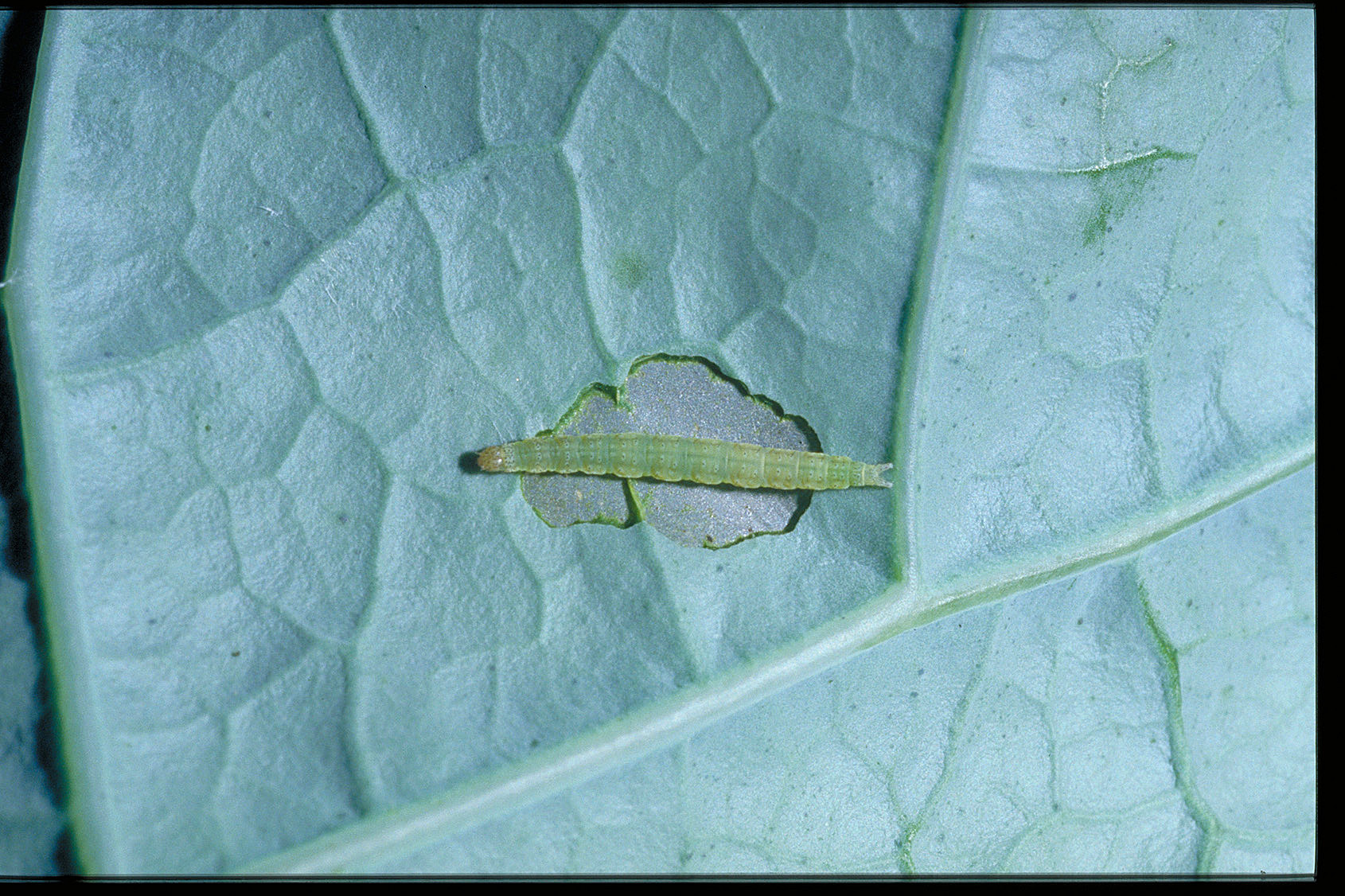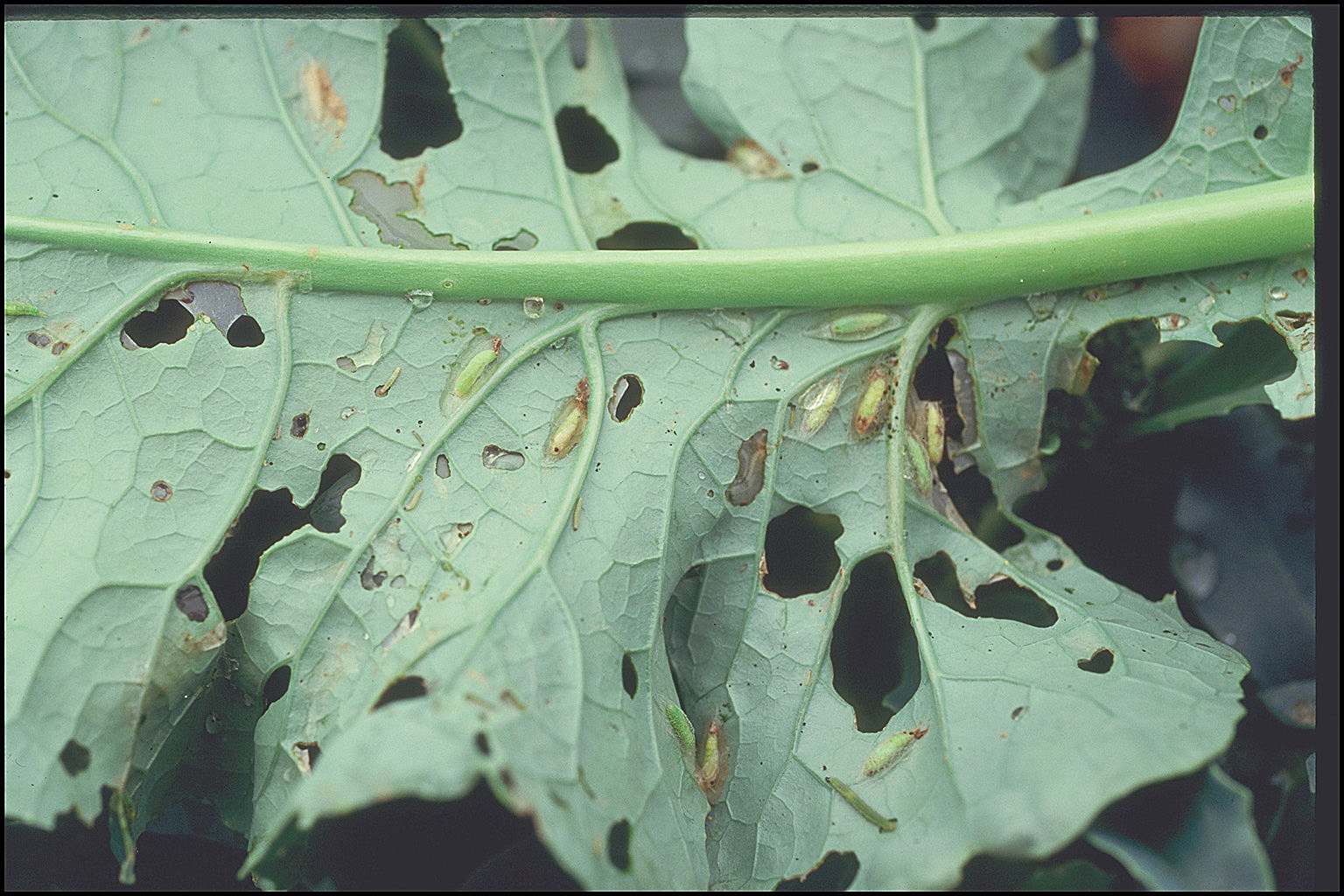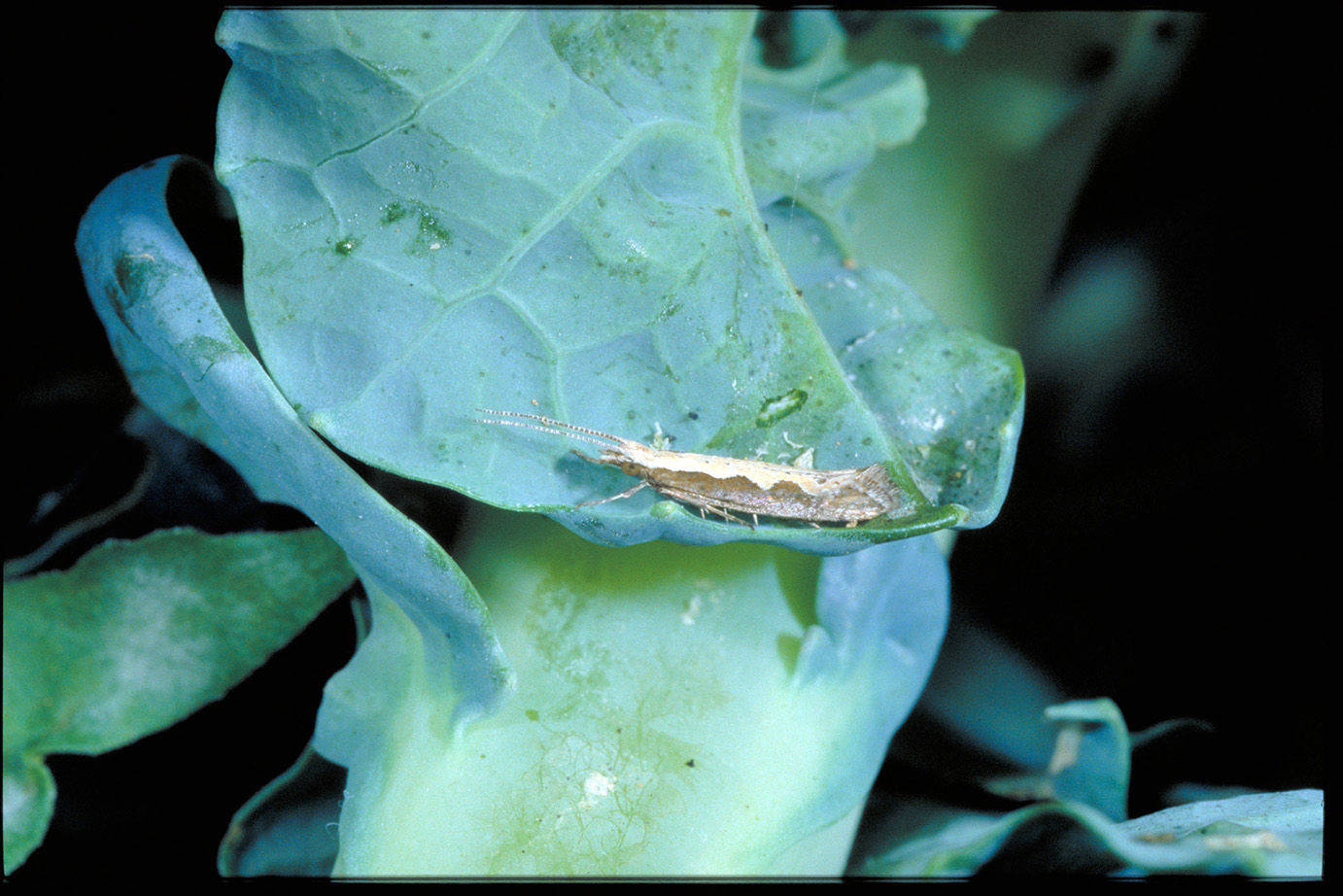Diamondback Moth
Return to insect pests
Diamondback moth (Plutella xylostella) larvae, despite their small size, can be very destructive to cole crops. Eggs are laid singly or in small groups on the undersides of lower leaves. Eggs are small, yellowish-white and somewhat football-shaped. Larvae are small, yellowish-green, spindle-shaped (widest in the center), and have a forked tail. When mature, larvae are 5⁄16 inch in length. The pupae are found in a gauze-like cocoon attached to leaves or stems of the cabbage plant. The wings of the male form three yellow diamond-shaped spots where they meet. The young larvae mine between the upper and lower leaf surfaces. Look for young larvae emerging from small holes in the underside of the leaf. Older larvae create “window-pane” holes while leaving the upper surface intact. Larvae often drop from the plant on silk threads when disturbed.

Diamondback moth caterpillar
(Photo: UKY Vegetable IPM Team, University of Kentucky)

Diamondback moth pupae
(Photo: UKY Vegetable IPM Team, University of Kentucky)

Diamondback moth adult
(Photo: UKY Vegetable IPM Team, University of Kentucky)
Management:
- Monitoring should begin when the plants are young.
- During cupping, larvae feed on heart leaves are difficult to find unless the outer leaves are pulled back.
- This pest has developed resistance to many classes of insecticides and repeated use of pyrethroids (IRAC group 3) can increase problems by interfering with natural biological control.
